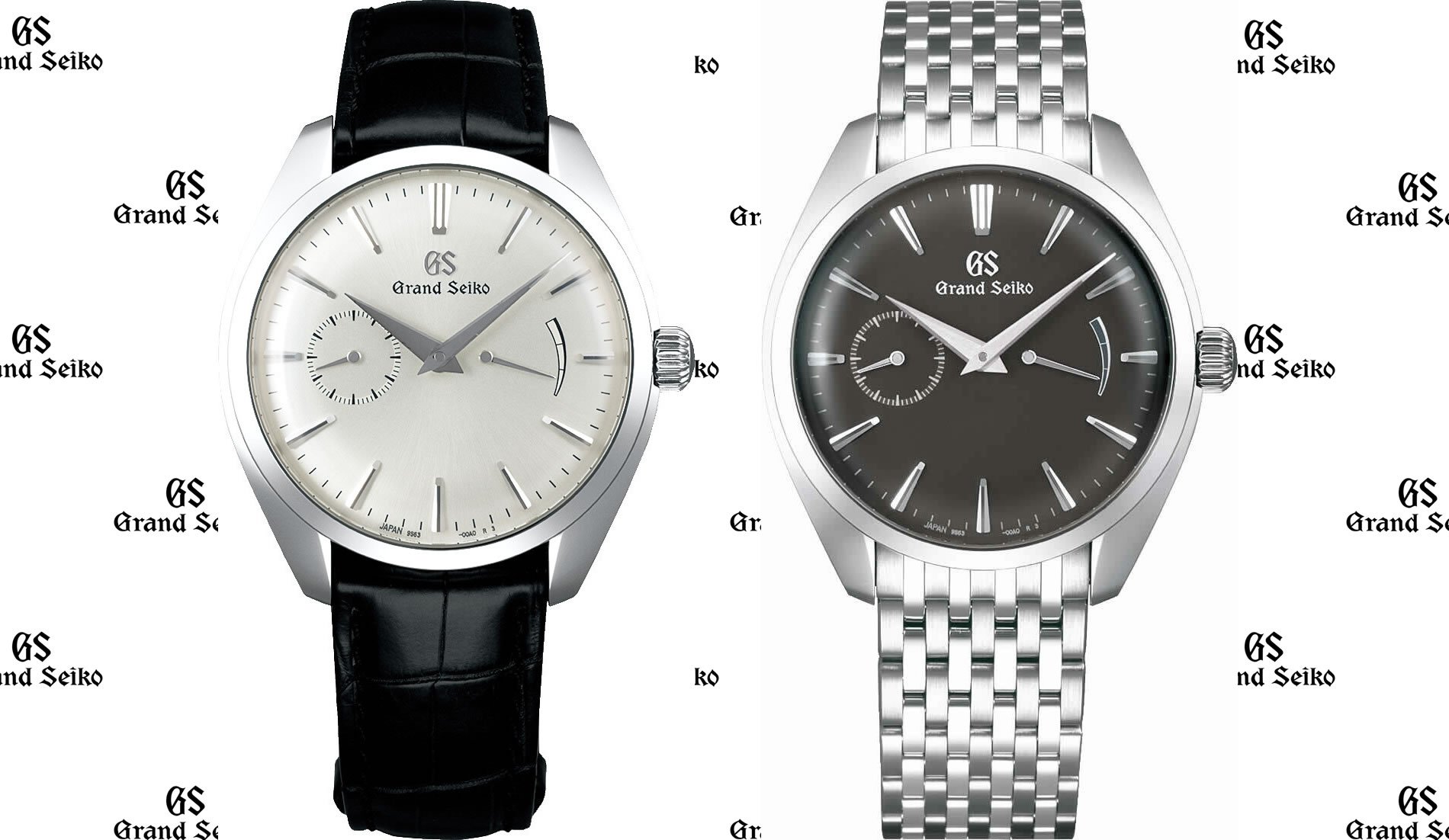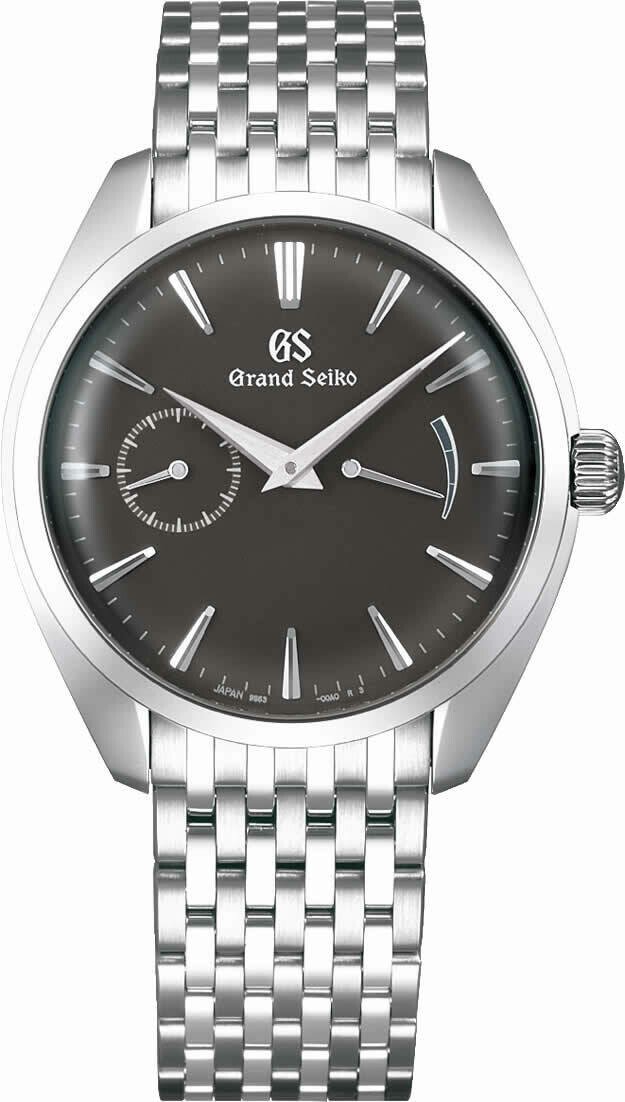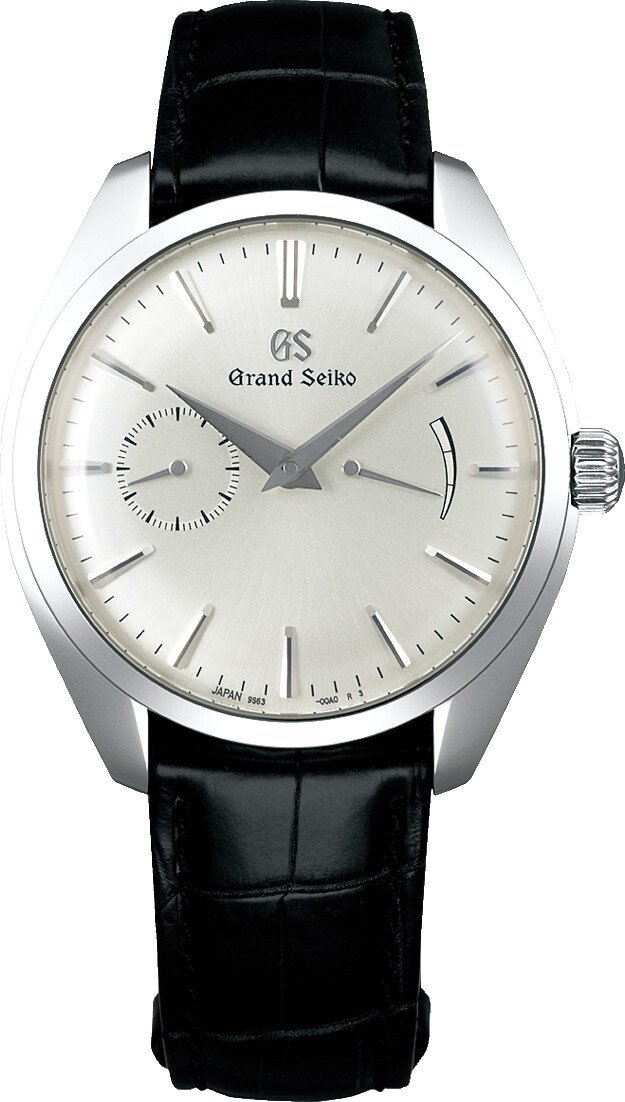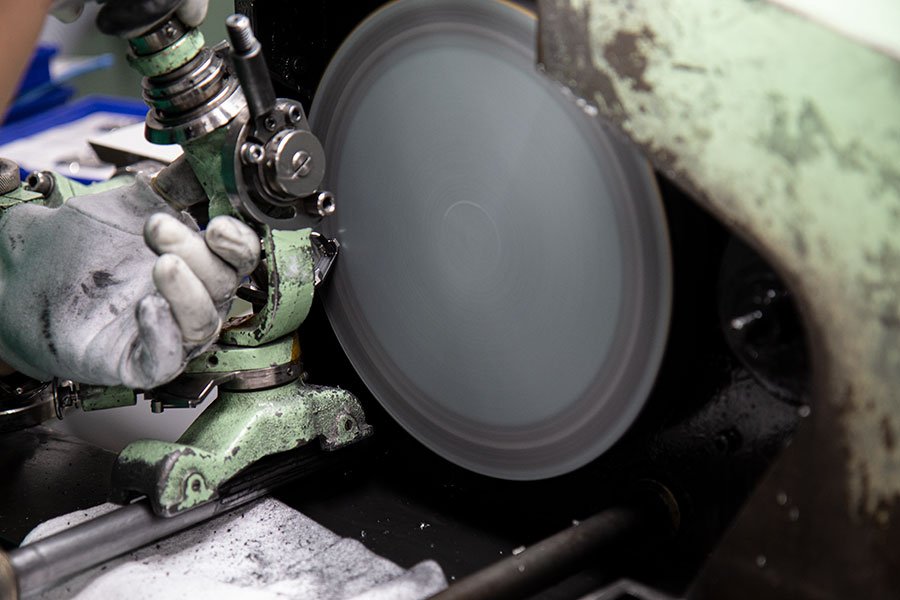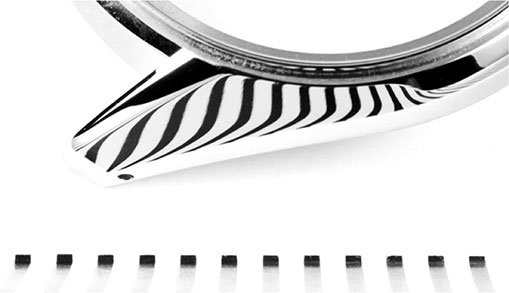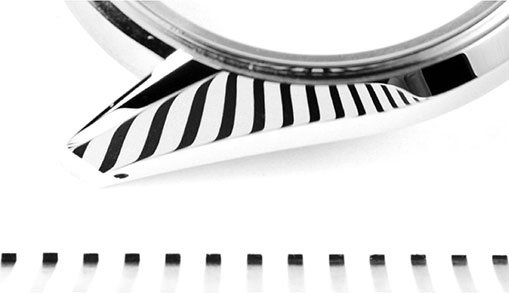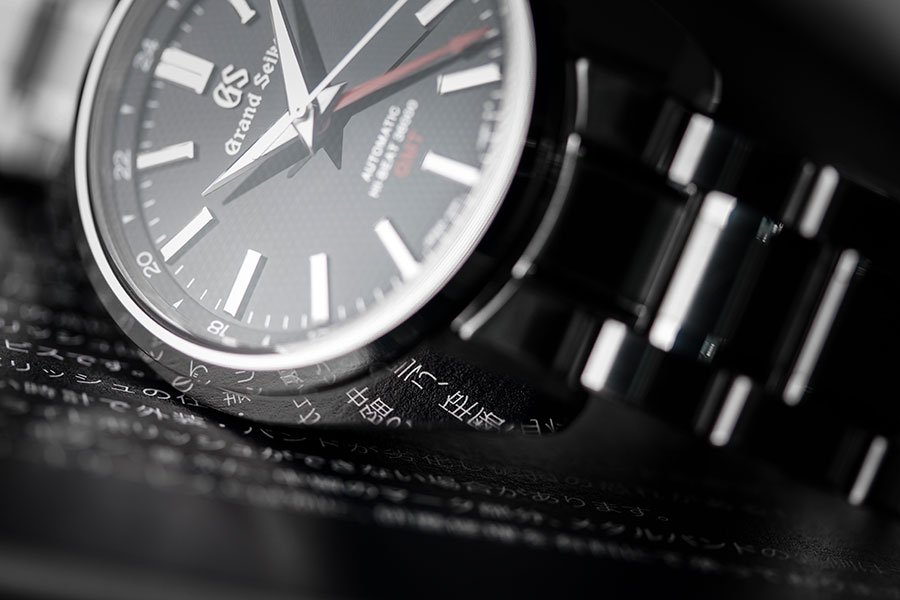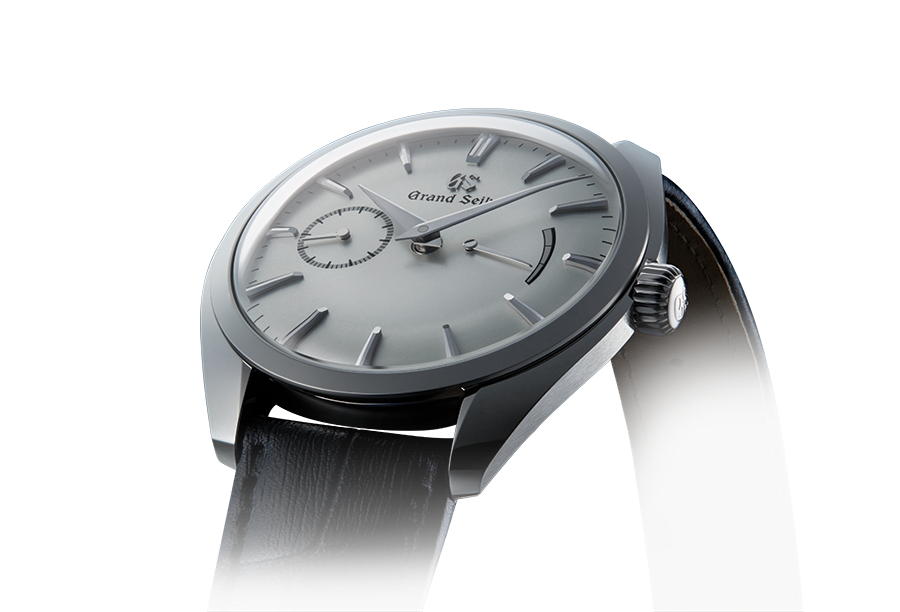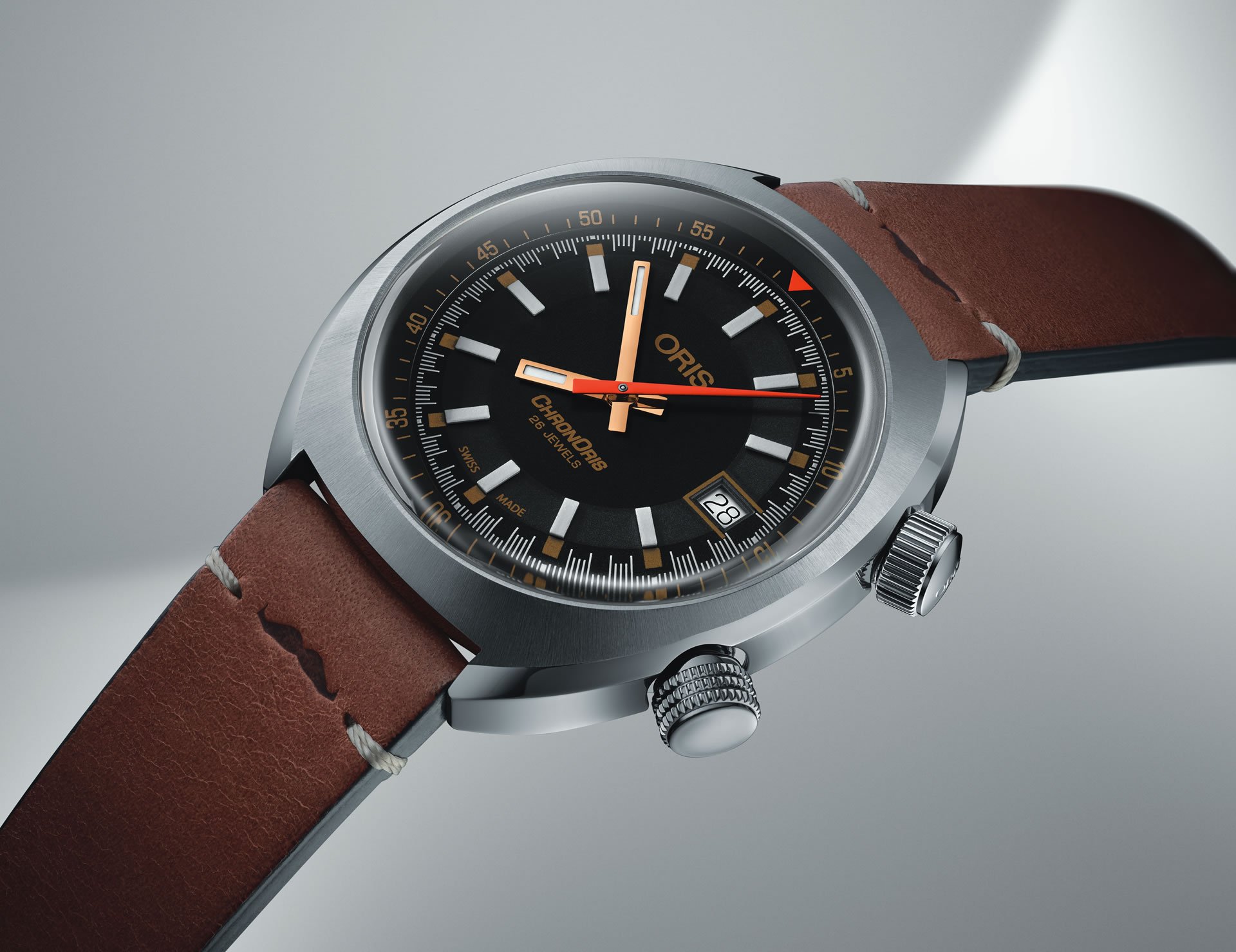A True Mirror Finish to Create a Beautiful Interplay of Light and Shadow.
The name “zaratsu” originally started as a translated name of a type of imported abrasive polishing wheel used to polish Grand Seiko watches starting in the 1960’s. Today, the term zaratsu has evolved into a unique method using different abrasives and techniques to create a perfect, distortion-free, mirror-finish, on all modern Grand Seiko models.
The Zaratsu Method
Zaratsu differs from traditional buff polishing in the wheel used entirely. As opposed to applying the case to the outer edge of a soft wheel made of a material such as cotton, zaratsu uses the flat broad part of a hard, abrasive surface to polish the case. Due to the delicate touch necessary, zaratsu finishing can only be done by hand, by few highly skilled craftsmen. It is said that the craftsmen can tell when a case is completed based on the sound and feel.
Multiple Steps to Achieve Mirror Surface
In order to create the perfect mirror surface zaratsu is known for, multiple steps are necessary. The cases are first polished using a traditional buffing wheel, then zaratsu finishing is applied (in some instances multiple versions as a preemptive), then a final light buff polishing is done to clean the surface after zaratsu.
Mirror Finishing Before Satin Finishing
Cases are mirror polished completely before putting on the final touches. Zaratsu surfaces are soon after brought to be satin finished, creating a beautiful interplay of light and shadow on the case.
Buff Polishing
End Result
The most noticeable trait of zaratsu polishing is that it is a truly distortion-free, mirror finish. When looking at the examples above, the small black blocks at the bottom reflect into the case sides. You will see that the buff polishing shows high distortion with blurry edges of the reflection itself. Zaratsu provides a crisp, clear and distortion-free mirror finish.
The reflection of text in the case sides or bezel expresses a clean and crisp reflection
Satin Finishing
Zaratsu is the mirror polishing process used on all Grand Seiko and is done completely by hand. However, not many people know that even the satin or brushed finishing is also done by hand. Depending on the size of the surface being finished, an abrasive strip or wheel can be used. However, on thin surfaces, a small hand held brush is used
Evolution of Zaratsu
There are now several different variations of zaratsu that are used in Grand Seiko. Abrasives will vary, as well as the techniques for applying the metal surface to the wheel. Some of these processes are even patented/patent pending.
Traditionally, zaratsu is best expressed on a flat surface to create a perfect mirror reflection. Due to a newly developed technique, the new Elegance Collection case design has dramatically curved surfaces, yet still retains the traits as if it were flat. This new process increases the difficulty but yields an astonishing result.

